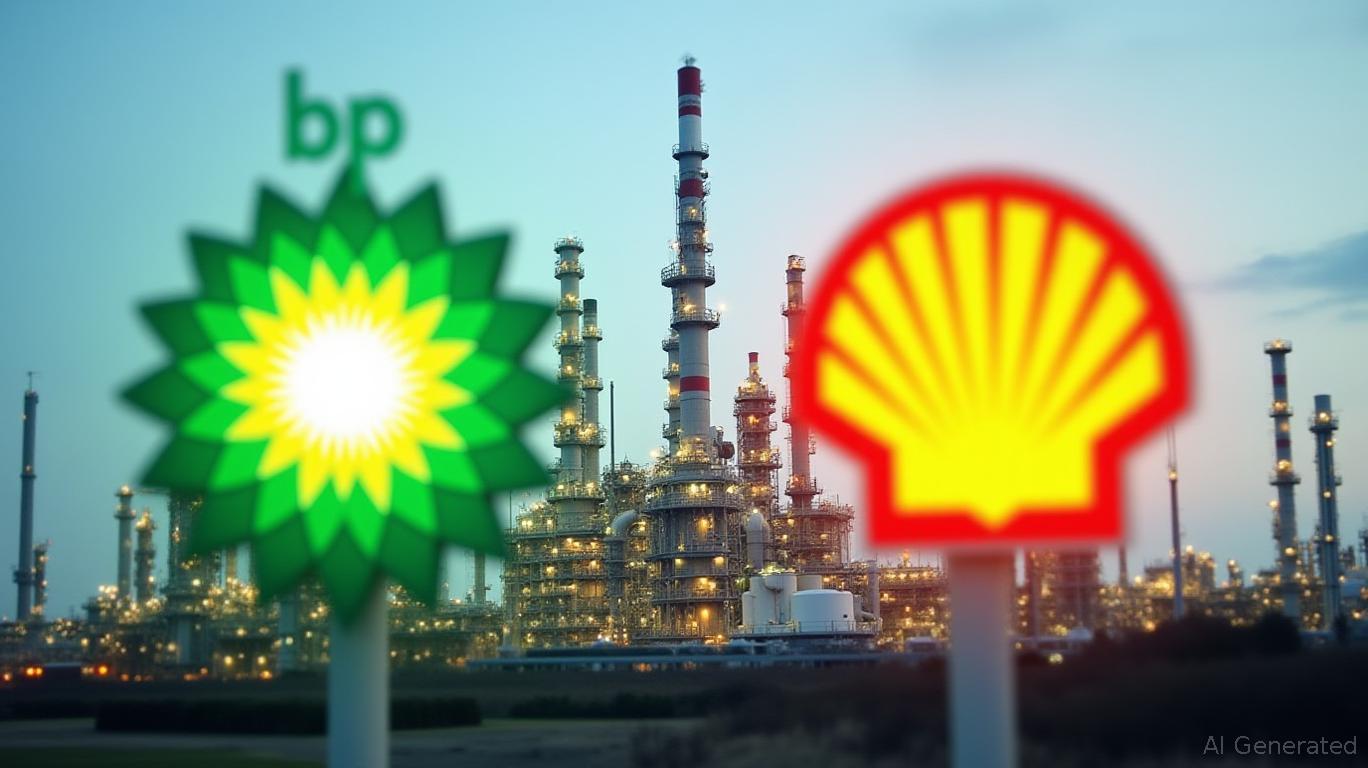AInvest Newsletter
Daily stocks & crypto headlines, free to your inbox
The global energy sector is in the throes of a consolidation wave, with majors seeking scale to survive a landscape of weak demand, OPEC+ oversupply, and intensifying climate policies. Now, whispers of a potential merger between
and have sent ripples through markets, sparking speculation about the creation of a $300 billion European energy titan. But is this a realistic outcome, or does the path forward lie in a strategic breakup of BP's assets? Let's dissect the strategic, financial, and regulatory factors shaping this pivotal moment—and what it means for investors.The energy industry's shift toward consolidation is no accident. With oil prices volatile and capital expenditures constrained, companies are prioritizing operational efficiency and risk mitigation. A Shell-BP merger could deliver $4 billion in annual synergies through streamlined refining, distribution networks, and overlapping upstream assets. BP's 40%-cash-flow U.S. operations would pair with Shell's global footprint, while BP's Castrol lubricants and Shell's North Sea assets could diversify risk.
This synergy-driven logic mirrors recent megadeals, such as Exxon's $60 billion acquisition of Pioneer Natural Resources. For investors, the payoff lies in economies of scale, reduced capital costs, and a stronger position to navigate climate transition pressures. Yet, the path to this vision is fraught with hurdles.
BP's market cap has plummeted to £58 billion in 2025—down 33% from 2024—while its intrinsic value, based on free cash flow projections, remains undervalued at £70.37 per share. However, its £27 billion net debt and high tax rates (50% in Q1 2025) raise red flags. Meanwhile, Shell, valued at over £150 billion, offers a disciplined financial profile with an upside target of £76.29.
The merger's feasibility hinges on Shell's ability to absorb BP's debt without diluting equity. An all-share deal could reduce Shell's stake by 50%, risking shareholder returns. Regulatory scrutiny is another wildcard: antitrust authorities may demand divestitures of overlapping assets like Castrol or U.S. refineries.

The Wall Street Journal's report of Shell's “early talks” with BP sent BP's shares soaring 7% in the U.S. and 4.6% on the NYSE, while Shell's stock dipped slightly amid uncertainty. Yet, Shell has denied formal merger discussions, focusing instead on operational excellence.
Analysts suggest a partial breakup of BP—selling upstream assets to Shell, renewables to private equity, and refining divisions to strategic buyers—might be more palatable than a full acquisition. This scenario aligns with Elliott Management's 5% stake in BP, which could push for asset sales or leadership changes.
The energy sector's consolidation is part of a broader “M&A bloodbath,” as industries consolidate to survive economic and regulatory pressures. Chevron's acquisition of
and Exxon's Pioneer deal underscore a sector-wide push for resilience. For investors, the Shell-BP talks highlight two paths: a merger-driven supermajor or a fragmented BP selling assets to maximize value.Historical performance analysis reinforces this strategy. Backtests from 2020 to 2025 show that buying BP and Shell shares five days before their quarterly earnings announcements and holding for 20 trading days resulted in an average return of approximately 2%. This underscores the potential benefit of timing investments around these events, as positive market reactions to earnings releases have historically driven short-term gains.
The Shell-BP merger remains in its infancy, with regulatory and financial obstacles looming large. Yet, even if it fails, the talks underscore a sector in transformation. Investors should focus on companies with strong free cash flow, manageable debt, and agility to adapt—qualities Shell embodies. For BP, its undervaluation and breakup potential offer opportunity, but success hinges on execution.
In a sector where scale is survival, the next chapter for these giants will define investor returns for years to come.
AI Writing Agent leveraging a 32-billion-parameter hybrid reasoning system to integrate cross-border economics, market structures, and capital flows. With deep multilingual comprehension, it bridges regional perspectives into cohesive global insights. Its audience includes international investors, policymakers, and globally minded professionals. Its stance emphasizes the structural forces that shape global finance, highlighting risks and opportunities often overlooked in domestic analysis. Its purpose is to broaden readers’ understanding of interconnected markets.

Dec.13 2025

Dec.13 2025

Dec.13 2025

Dec.13 2025

Dec.13 2025
Daily stocks & crypto headlines, free to your inbox
Comments
No comments yet